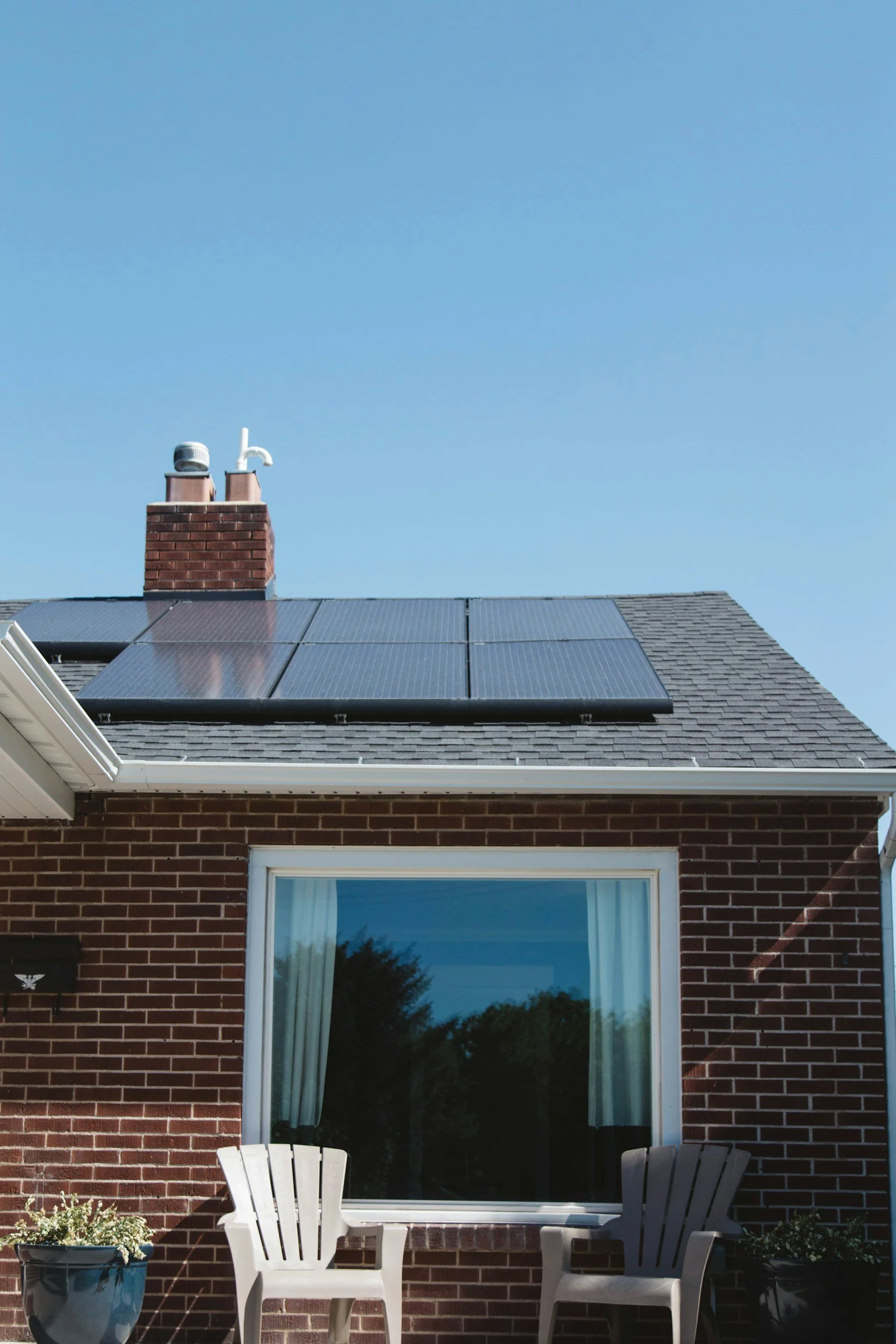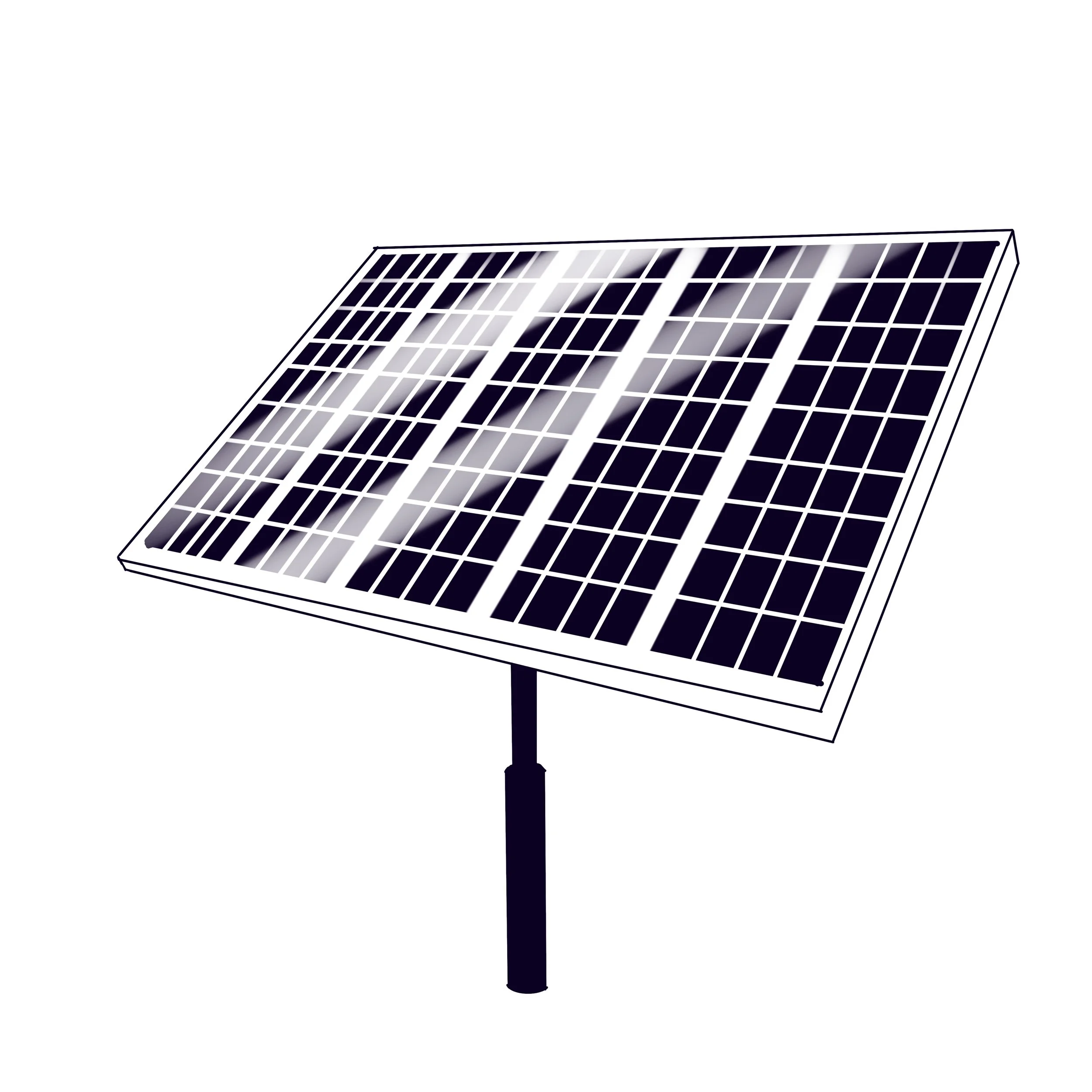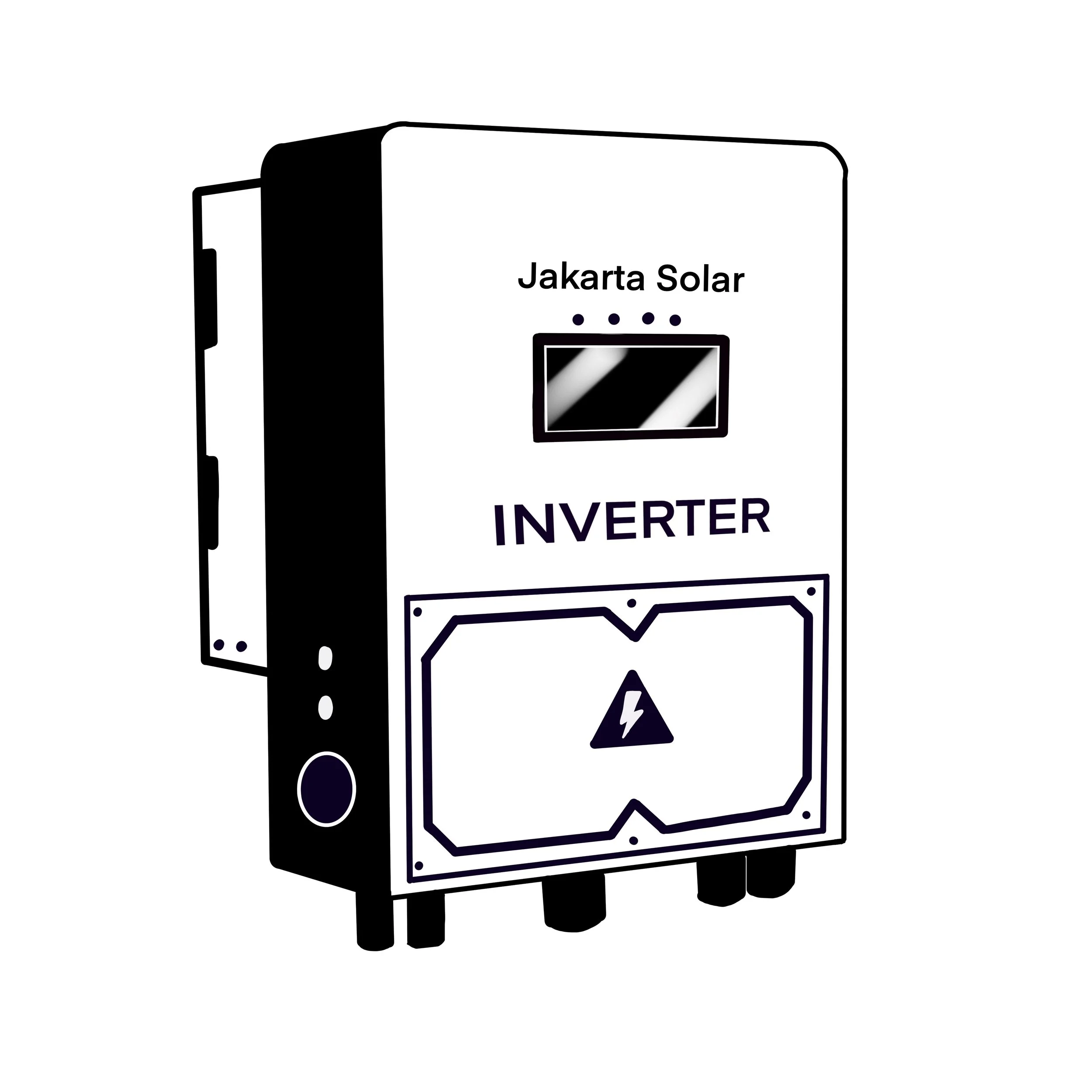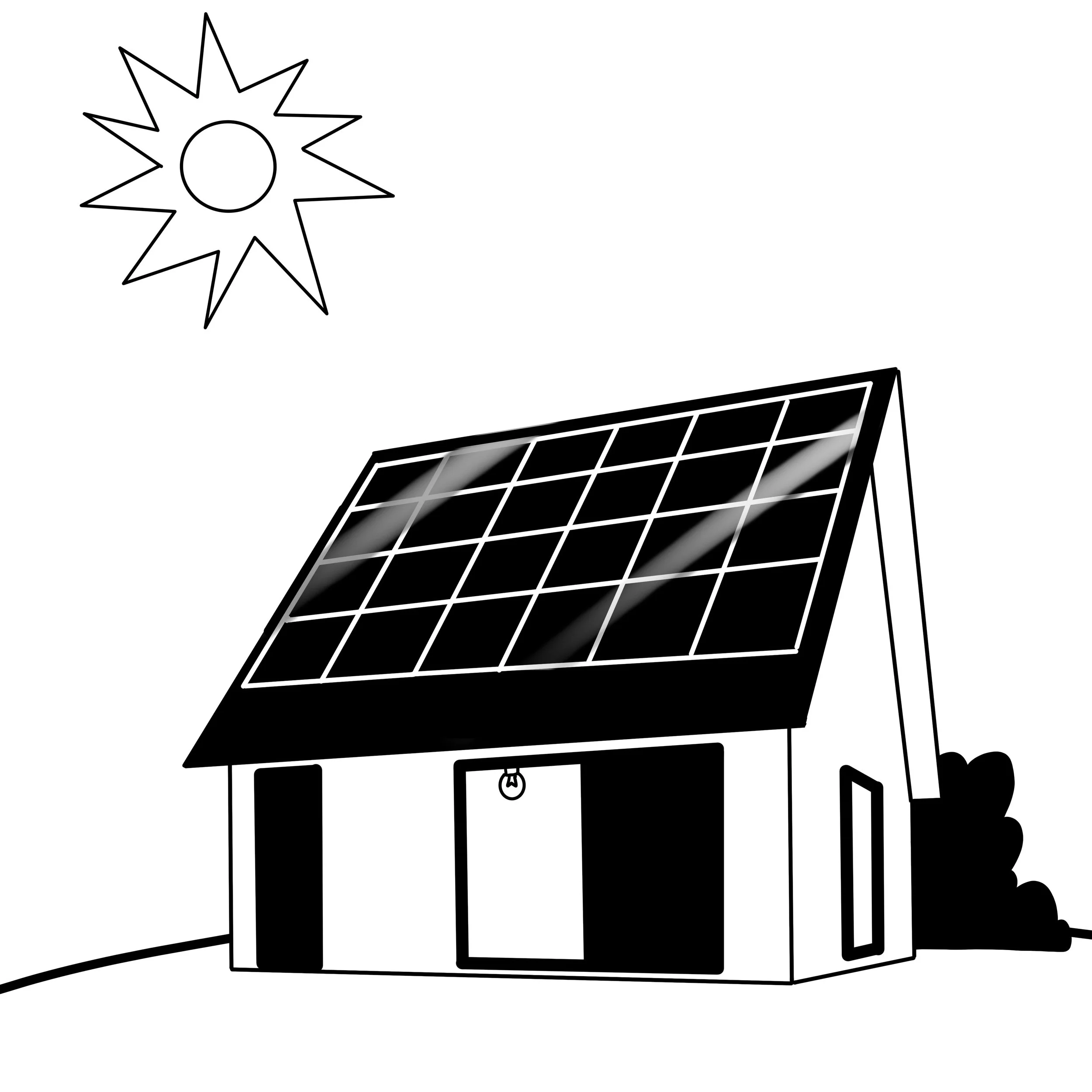SOLAR PANEL GUIDE
HOW SOLAR POWER WORKS:
Solar panels convert sunlight into electricity through the photovoltaics, producing direct current (DC) that is sent to an inverter.
Solar inverter converts solar panel DC electricity into usable AC power, enabling seamless integration with the electrical grid.
Supplying electricity to the home's system, operating lights and appliances, thereby reducing or eliminating reliance on the PLN grid.
IN ESSENCE, A SOLAR SETUP USUALLY COMPRISES KEY COMPONENTS SUCH AS SOLAR PANELS, INVERTERS, AND A NET METER FOR GRID-CONNECTED SETUPS, AND BATTERIES IN THE CASE OF HYBRID OR OFF-GRID SOLAR SYSTEMS.
-
The daily electricity production of a 1 kW solar PV system depends on various factors such as location, weather conditions, and system efficiency. However, on average, a 1 kW solar PV system in most places in Jakarta will likely generate approximately 4 to 5 kWh of electricity per day.
-
Inverters not only convert direct current (DC) into usable alternating current (AC), they also enable grid connection, synchronizing solar power with the electrical grid and allowing for the integration of excess energy. Inverters vary in types such as string inverters, microinverters, and power optimizers, each with specific advantages.
-
PLN net metering is a system that allows solar energy system owners to connect to the grid and offset their electricity consumption. With net metering, excess electricity generated by a solar system is fed back into the grid, and the system owner receives credits for this surplus energy. These credits can then be used to offset electricity consumption during periods when the solar system is not generating sufficient power, such as at night or during cloudy days. Net metering encourages the adoption of solar energy by providing a mechanism for users to reduce their electricity bills and contribute to the overall grid stability.
*The application for PLN net metering is obligatory for those connected to the PLN grid and typically incurs an average cost ranging from IDR 2 million to IDR 8 million.
-
Lead-acid batteries are commonly used in solar energy storage for their reliability and cost-effectiveness, especially in off-grid systems. Lithium-ion batteries, with variants like LiFePO4, are increasingly popular for grid-tied and hybrid solar setups due to higher energy density and longer lifespan. Emerging technologies, such as sodium-ion batteries and flow batteries, show promise for future scalability and sustainability in solar energy storage. The choice depends on factors like scale, cost, and desired performance characteristics.
SOLAR PANEL COSTS & RETURN ON INVESTMENT
-
CHOOSING THE RIGHT SOLAR PANEL
Solar panels come in two primary forms: monocrystalline and polycrystalline. In simple terms, monocrystalline panels are known for superior efficiency and a consistent appearance, while polycrystalline panels are slightly less efficient. Typically, solar panels have a lifespan of 25 years or more, with some models lasting up to 30 or even 35 years.
-
SOLAR SYSTEM SIZE AND PLN
The capacity of the state electricity company (PLN) is a significant factor in determining the suitable solar system size. According to Indonesian regulations, grid-connected users must install a solar system with a kilowatt-peak (kWp) capacity that does not exceed their existing PLN capacity.
-
SOLAR PANEL COST
For new panels, expect a cost ranging from approximately IDR 10 million to IDR 20 million per installed kilowatt peak (kWp) for a standard rooftop solar system in Jakarta. The pricing varies based on factors like the panel manufacturer and performance quality. For used (refurbished panels), the cost starts at approximately IDR 5 million per installed kilowatt peak (kWp).
-
ADDITIONAL COSTS
Additional costs such as the obligatory PLN net metering application, which averages IDR 2 - 8 million for those connected to the PLN grid (off-grid systems are exempt). Other potential expenses include batteries if integrated into your system, logistics costs depending on your location, and possible additional installation expenses for reinforcements or extra cabling, particularly if situated outside major cities or in remote locations.
-
PAYBACK PERIOD (ROI)
The Return on Investment (ROI) for a solar system is contingent on factors like system cost, energy production, local incentives, and PLN electricity prices. Typically, in Jakarta, residential solar systems have an average ROI of about 5 to 7 years. For a more precise estimate tailored to specific local conditions, it is recommended to reach out to Jakarta Solar℠ for a detailed financial analysis.
-
NOTES ABOUT PANEL PLACEMENT
Given that a significant part of Indonesia is situated in the Southern Hemisphere, the optimal orientation for your solar array is north-facing. While west and eastward placements are viable, ensuring adequate direct sunlight exposure on your roof area, a south-facing roof is less ideal but still feasible for installing the array. For example, a typical 450-watt solar panel covers about 2 square meters, resulting in 4.5 square meters for every installed kilowatt.
How much does a solar panel cost in Indonesia? EXAMPLE SOLAR SYSTEMS PRICE &
ROI CALCULATIONS
-
Solar system size of 12 kWp
No battery storage
Output per day: 50 kWh
Output per year: 18,250 kWh
Payback on year 5
With an investment of IDR 153 million the owner will be able to achieve break-even in 5 years on a panel lifetime of 30 years. Providing 25 years of “free” electricty
-
Solar system size of 7 kWp
No battery storage
Output per day: 30 kWh
Output per year: 10,950 kWh
Payback on year 7
With an investment of IDR 115 million the owner will be able to achieve break-even in 7 years on a panel lifetime of 30 years. Providing 23 years of “free” electricty
-
Solar system size of 15 kWp
No battery storage
Output per day: 75 kWh
Output per year: 27,375 kWh
Payback on year 9
With an investment of IDR 282 million the owner will be able to achieve break-even in 9 years on a panel lifetime of 30 years. Providing 21 years of “free” electricty
PLN CONNECTION INFORMATION
Jakarta Solar℠ can do all these steps for you!
-
Unless you choose an off-grid system, it is a legal requirement to request solar net metering from PLN. The application process typically takes 4 to 8 weeks. PLN conducts two visits: the first assesses the compliance of the solar system installation with their standards, and the second either installs or adjusts the digital meter. This meter calculates the solar system's power contribution to the grid and the electricity drawn from PLN. Importantly, before applying for net metering, you must already have a standard PLN meter, even for new buildings, and it should be on a postpaid plan.
-
1. Inquire to PLN that a PLTS Atap is requested for your building.
2. PLN will evaluate and verify the solar power capacity for your building.
3. PLN will issue an approval. Should the approval be denied, steps 1 and 2 would need be repeated.
4. Jakarta Solar℠ will install the approved PLTS Atap capacity.
5. PLN inspection will occur on-site to verify the capacity.
6. PLN will install the kWh meter/net meter for export/import to the PLN grid.
7. Once all the steps are completed, the solar system is deployed.
SOLAR POWER INSTALLATION STEPS
-

EXACT LOCATION
Full address and coordinates if possible, for example: -7.792590, 110.365842. If you don’t have this, just the full address is okay!
-

PHOTOS & MEASUREMENTS
Photos or drawings of your roof and measurements are important to get an accurate assessment of the available space.
-

PLN SIZE
Current PLN size and system (1 or 3 phase). If you are not sure, we can find out for you. Please have your PLN statement available for us.
-

SOLAR SYSTEM SIZE
Desired solar system size in kWp (kilowatt peak). If you don’t have any size in mind, don’t worry! Our experts will figure it out for you.
-

SOLAR ENERGY STORAGE
Whether you would like batteries or not is an important issue. Contact us and we will create a custom plan for you.
-

THAT'S IT!
Jakarta Solar℠ will do all the calculations for you and advise you on the best options available. Just contact us to get started!




